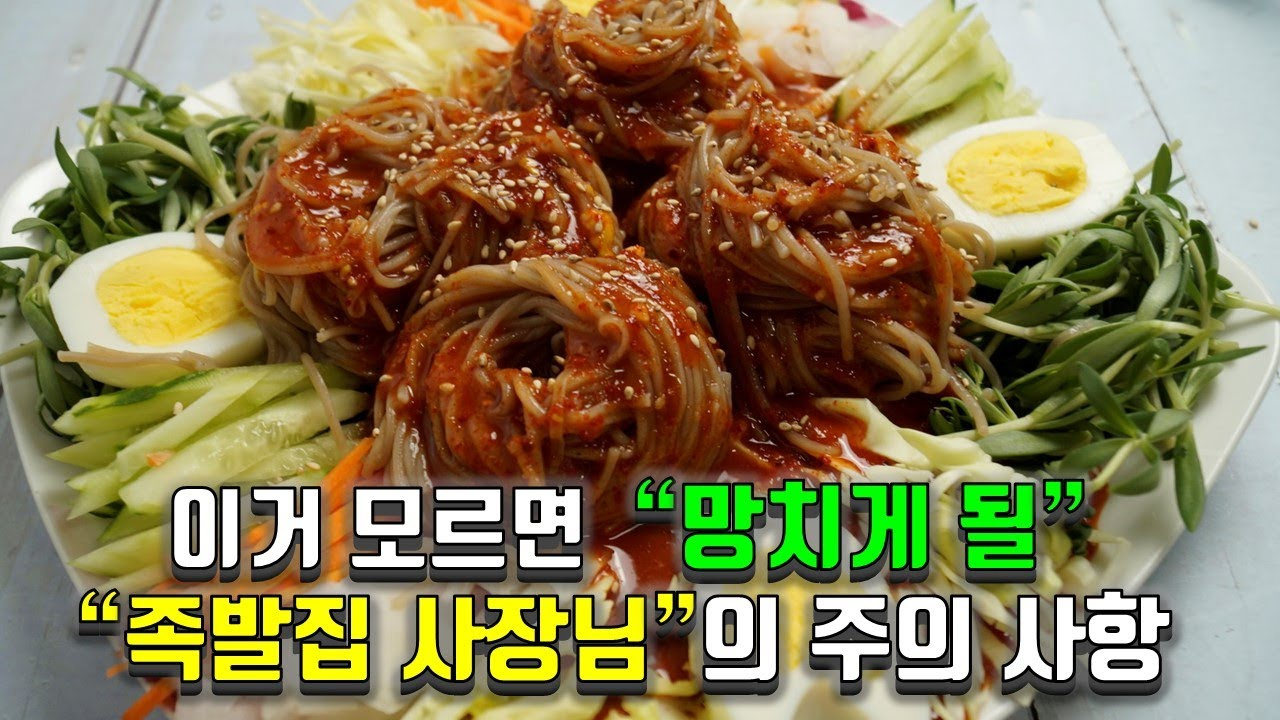Spicy & Sweet Japchae Makguksu
Make Jokbal Restaurant Style Makguksu / Bibim Guksu at Home / The Golden Recipe for Spicy Makguksu Sauce

Experience the authentic taste of Jokbal restaurant-style Makguksu! This is the golden recipe for homemade Bibim Guksu with a delightful spicy and sweet sauce, perfect for any occasion.
Sauce Base Ingredients- 1/5 medium onion (approx. 50g)
- 3 cloves garlic (or 1 Tbsp minced garlic, approx. 20g)
- 100cc Saida (Korean soda drink) or Sprite
- 50cc orange juice (tangerine juice can be substituted)
Spicy & Sweet Sauce- 3 Tbsp fine gochugaru (Korean chili powder, approx. 21g)
- 4 Tbsp sugar (approx. 40g)
- 4 Tbsp gochujang (Korean chili paste, approx. 120g)
- 8 Tbsp mulyeot (corn syrup, approx. 120g)
- 8 Tbsp vinegar (approx. 65g)
- 1/3 Tbsp prepared mustard (approx. 7g)
- 100cc Galbitang broth (beef rib soup broth, or use substitute below if unavailable)
Substitute for Galbitang Broth- 100cc water
- 1/2 Tbsp Dasida (MSG-based seasoning, approx. 6g)
- 1/5 Tbsp Mioon (MSG, approx. 1-2g)
- 3 Tbsp fine gochugaru (Korean chili powder, approx. 21g)
- 4 Tbsp sugar (approx. 40g)
- 4 Tbsp gochujang (Korean chili paste, approx. 120g)
- 8 Tbsp mulyeot (corn syrup, approx. 120g)
- 8 Tbsp vinegar (approx. 65g)
- 1/3 Tbsp prepared mustard (approx. 7g)
- 100cc Galbitang broth (beef rib soup broth, or use substitute below if unavailable)
Substitute for Galbitang Broth- 100cc water
- 1/2 Tbsp Dasida (MSG-based seasoning, approx. 6g)
- 1/5 Tbsp Mioon (MSG, approx. 1-2g)
Cooking Instructions
Step 1
In a blender, combine all the ‘Sauce Base Ingredients’ (onion, garlic, Saida, and orange juice). Blend until smooth. If you don’t have orange juice, tangerine juice works well. Blending the onion and garlic, rather than mincing them, ensures a smoother texture when mixed with the noodles.

Step 2
In a bowl, add all the ingredients listed under ‘Spicy & Sweet Sauce’. It’s best to use fine gochugaru for a smoother texture. While slightly coarser gochugaru will still yield a delicious taste, the fine powder provides a better mouthfeel. Ensure the sugar is level, not heaping. If you are sensitive to sweetness, start with half the sugar and adjust to your taste.

Step 3
Spoon the gochujang into the bowl without making a heaping mound. Using commercial gochujang will help replicate the authentic taste you find in restaurants. Measure the mulyeot (corn syrup) to be equal in volume to the gochujang (1:1 ratio).

Step 4
Add 100cc of Galbitang broth. This is one of the secrets to a truly delicious makguksu, adding a deep savory flavor.

Step 5
If you don’t have Galbitang broth, combine the ingredients listed under ‘Substitute for Galbitang Broth’ (water, Dasida, Mioon). You can either briefly boil this mixture and let it cool, or simply add it directly to the sauce.

Step 6
Pour the blended mixture from the blender into the bowl with the other sauce ingredients. Mix everything thoroughly until well combined.

Step 7
When adding vinegar, opt for plain distilled vinegar (yangjo sikcho) that provides pure acidity, rather than apple cider vinegar or other flavored vinegars.

Step 8
You can use freshly grated mustard or about 1/3 Tbsp of prepared mustard from a tube. The pungent kick from the mustard significantly enhances the makguksu’s flavor. To prevent lumps, it’s best to mix the mustard with 1-2 tablespoons of water in a small dish before adding it to the main sauce mixture. This ensures it disperses evenly.

Step 9
After mixing all the sauce ingredients evenly, let it refrigerate and mature for about a day. This resting period allows the gochugaru to mellow, eliminating any raw chili powder taste and deepening the overall flavor.

Step 10
Prepare your vegetables by thinly julienning your favorites like lettuce, cabbage, cucumber, and carrots. Aim for about 2-3 generous handfuls. You can also add thinly sliced pickled radish wraps (ssammu), rinsed kimchi, or onions for extra flavor and texture.

Step 11
Cook 2 servings of makguksu noodles according to the package directions. After cooking, rinse the noodles thoroughly under cold running water 2-3 times to cool them completely. For the best results, choose makguksu or buckwheat noodles with a high buckwheat content from the noodle aisle.

Step 12
It’s crucial to drain the noodles very well after rinsing. Excess water will dilute the sauce, making the dish taste bland.

Step 13
Arrange the chilled makguksu noodles and a generous amount of prepared vegetables on a large serving plate. Drizzle liberally with the matured sauce. This sauce is not overly salty, so don’t hesitate to use plenty! Using a large platter allows you to mix everything directly on the plate, just like at a Jokbal restaurant – there’s a reason those platters are so big! If you don’t have a large plate, mix the noodles, vegetables, and sauce together in a bowl first, then transfer to a serving plate for presentation.




